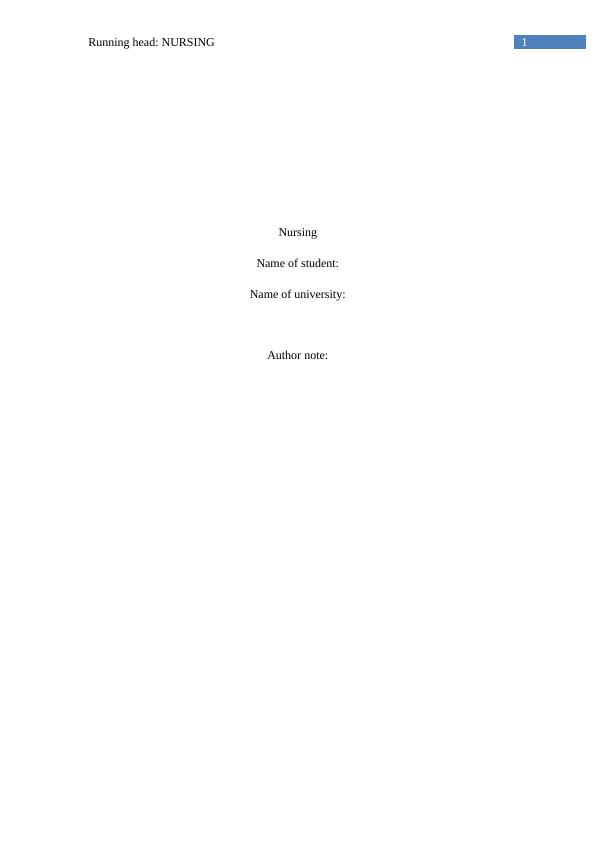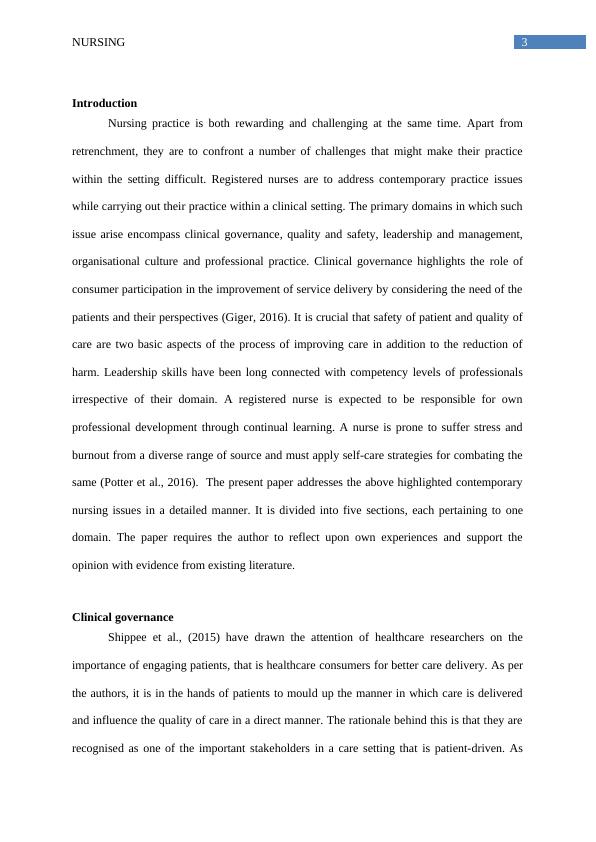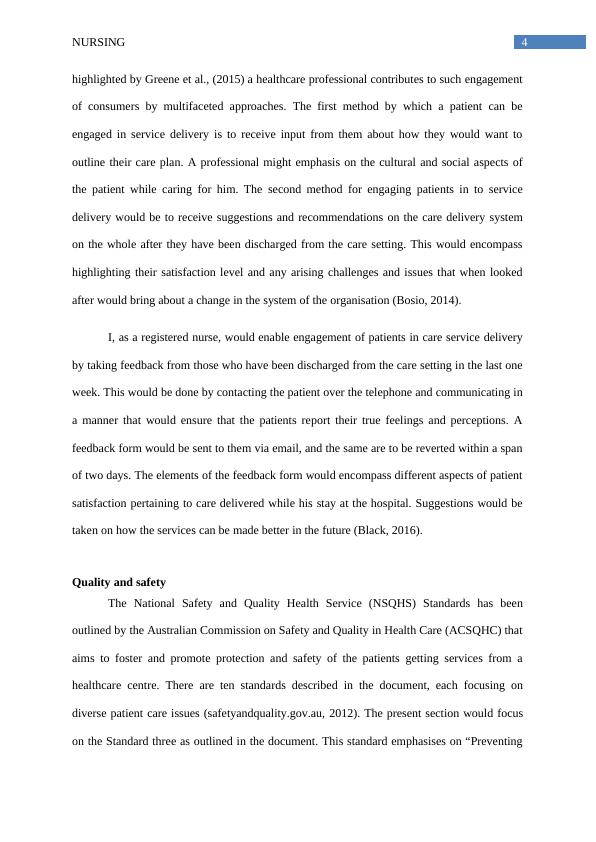Organisational Culture and Professional Practice
12 Pages2962 Words43 Views
Added on 2020-04-07
Organisational Culture and Professional Practice
Added on 2020-04-07
ShareRelated Documents
1Running head: NURSINGNursing Name of student:Name of university:Author note:

2NURSINGTable of ContentsIntroduction................................................................................................................................3Clinical governance....................................................................................................................3Quality and safety......................................................................................................................4Leadership and management......................................................................................................5Organisational culture................................................................................................................6Transition to practice..................................................................................................................7Conclusion..................................................................................................................................8References................................................................................................................................10

3NURSINGIntroduction Nursing practice is both rewarding and challenging at the same time. Apart fromretrenchment, they are to confront a number of challenges that might make their practicewithin the setting difficult. Registered nurses are to address contemporary practice issueswhile carrying out their practice within a clinical setting. The primary domains in which suchissue arise encompass clinical governance, quality and safety, leadership and management,organisational culture and professional practice. Clinical governance highlights the role ofconsumer participation in the improvement of service delivery by considering the need of thepatients and their perspectives (Giger, 2016). It is crucial that safety of patient and quality ofcare are two basic aspects of the process of improving care in addition to the reduction ofharm. Leadership skills have been long connected with competency levels of professionalsirrespective of their domain. A registered nurse is expected to be responsible for ownprofessional development through continual learning. A nurse is prone to suffer stress andburnout from a diverse range of source and must apply self-care strategies for combating thesame (Potter et al., 2016). The present paper addresses the above highlighted contemporarynursing issues in a detailed manner. It is divided into five sections, each pertaining to onedomain. The paper requires the author to reflect upon own experiences and support theopinion with evidence from existing literature. Clinical governanceShippee et al., (2015) have drawn the attention of healthcare researchers on theimportance of engaging patients, that is healthcare consumers for better care delivery. As perthe authors, it is in the hands of patients to mould up the manner in which care is deliveredand influence the quality of care in a direct manner. The rationale behind this is that they arerecognised as one of the important stakeholders in a care setting that is patient-driven. As

4NURSINGhighlighted by Greene et al., (2015) a healthcare professional contributes to such engagementof consumers by multifaceted approaches. The first method by which a patient can beengaged in service delivery is to receive input from them about how they would want tooutline their care plan. A professional might emphasis on the cultural and social aspects ofthe patient while caring for him. The second method for engaging patients in to servicedelivery would be to receive suggestions and recommendations on the care delivery systemon the whole after they have been discharged from the care setting. This would encompasshighlighting their satisfaction level and any arising challenges and issues that when lookedafter would bring about a change in the system of the organisation (Bosio, 2014). I, as a registered nurse, would enable engagement of patients in care service deliveryby taking feedback from those who have been discharged from the care setting in the last oneweek. This would be done by contacting the patient over the telephone and communicating ina manner that would ensure that the patients report their true feelings and perceptions. Afeedback form would be sent to them via email, and the same are to be reverted within a spanof two days. The elements of the feedback form would encompass different aspects of patientsatisfaction pertaining to care delivered while his stay at the hospital. Suggestions would betaken on how the services can be made better in the future (Black, 2016). Quality and safetyThe National Safety and Quality Health Service (NSQHS) Standards has beenoutlined by the Australian Commission on Safety and Quality in Health Care (ACSQHC) thataims to foster and promote protection and safety of the patients getting services from ahealthcare centre. There are ten standards described in the document, each focusing ondiverse patient care issues (safetyandquality.gov.au, 2012). The present section would focuson the Standard three as outlined in the document. This standard emphasises on “Preventing

End of preview
Want to access all the pages? Upload your documents or become a member.
Related Documents
Engagement in Professional Nursinglg...
|15
|3739
|431
Clinical Leadership in Nursing PDFlg...
|10
|2459
|83
Shared Governance, Clinical Governance and Self-Governance in Nursinglg...
|6
|1282
|455
Registered Nurses Scope of Practice in Australialg...
|7
|1764
|20
Leadership and Clinical Governancelg...
|10
|2173
|433
Clinical Leadership in Nursinglg...
|8
|2913
|12
